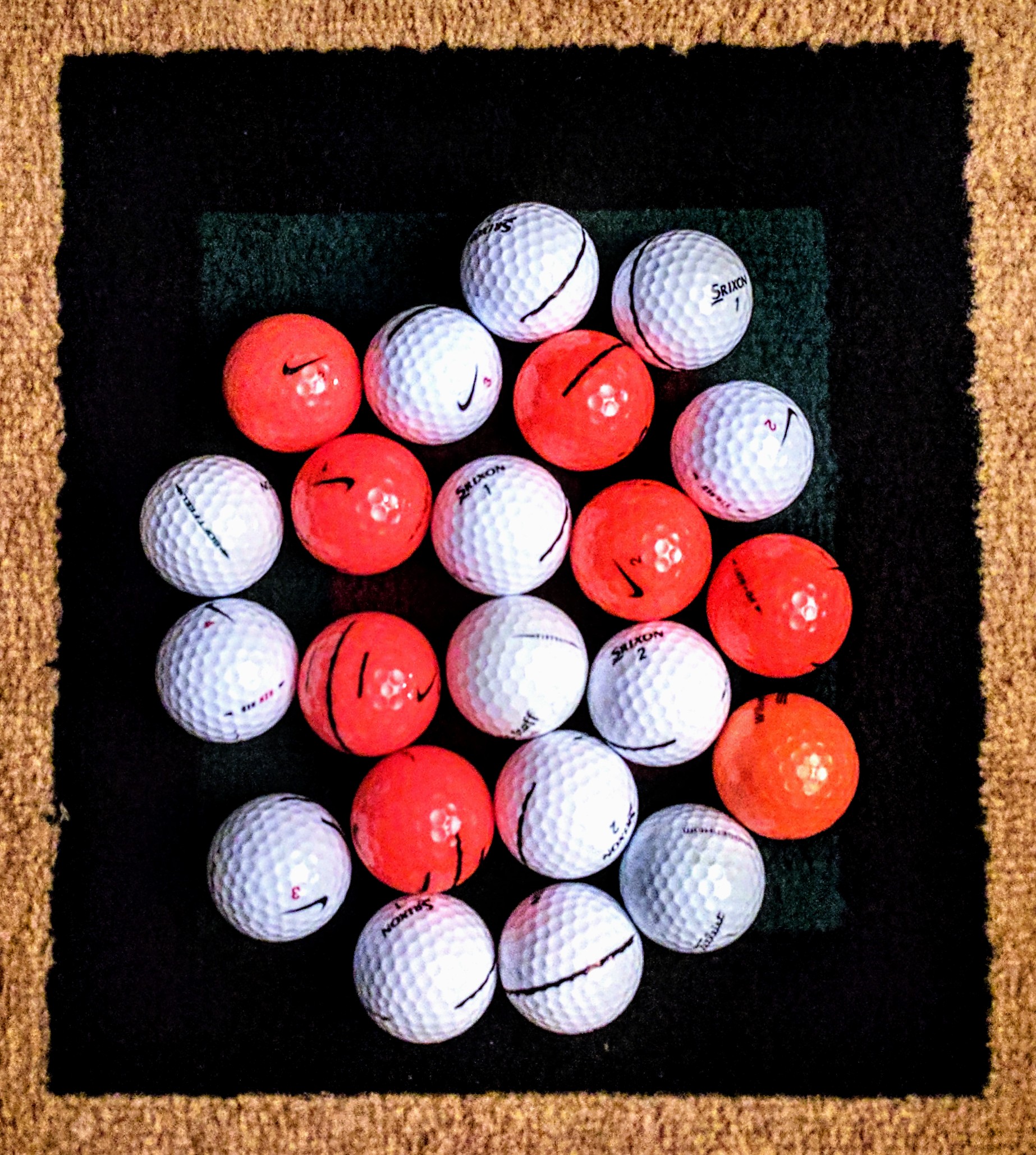Ball selection for the Beginner
Where should your priorities lie?
Be honest with yourself. As a Golf Beginner you are going to lose a lot of balls on the course. So price should definitely be one of the first things you consider when selecting a ball. Fortunately for you, there are many quality balls on the market that should suit your game without breaking the bank.
As a Beginner you will be prone to making contact all over the face of your clubs. Maintaining a square face at impact is also incredibly difficult for most Beginners as well. For these reasons a Low Spin Low Compression ball would benefit most Beginners. This type of ball will help reduce the severity of slices, and hooks. The ball won’t completely eliminate a slice, or hook, but possibly lesson it to a manageable point. I’ve tested both High Spin, and Low Spin balls on simulators. Having a Low Spin ball saves me about 5 strokes per round.
Another thing to consider when deciding which ball to purchase is in my opinion the deciding factor. How it feels, and rolls when putting. Seriously it’s the single most important aspect of what makes a ball right for you. A ball could give me 10 more yards of distance off the Tee. It could stop 2 yards quicker on approach shots into the Green. It could spin like a top off my Wedges. If it doesn’t feel right, or roll true off my Putter though. Then it isn’t for me. As a true Beginner the first swing you should be able to consistently repeat is your Putter stroke. You are going to hit Drives all over the place, so 10 yards further into the Woods doesn’t help. You will Duff, or Blade your approach shots, so stopping quicker won’t help. The difficulty you will have using your first Wedge is massive, so extra spin won’t make any difference. When you reach the Green though. If that ball rolls straight, and true. You will turn brutally frustrating holes, into a thing of beauty.
The last thing to consider when selecting a ball is how it flies off your Driver. If you have found a few balls that meet the other criteria? Choosing between them can come down to Driver advantage. Some balls have dimple patterns that are specifically designed to help get the ball up in the air. Depending on your natural launch angle, that could be beneficial. More often than not. A Hole that starts well, ends well. Hitting a ball off the Tee that inspires confidence can be all you need to get off to a good start.
Knowing which ball is right for you takes a lot more than just reading reviews. Buy a few sleeves of balls that appeal to you, and test them in a Simulator. Then test all of them on a Putting Mat. Make sure to use your own clubs, and Putter when testing balls. Once you’ve decided which ball is right for you. Make sure you buy a bunch of them. Play those balls exclusively! Whenever you go to a store to try a new club you are considering purchasing. Bring along a sleeve of your balls with you. That way you’ll get a feel for how your ball flys off that club. You will also be used to the way the characteristics of that ball affect your shot shape. If you use whatever balls the store has in the simulator. The performance of the club you are testing will be impossible to accurately compare with your current equipment.
Lets say that you are in the middle of a round of Golf. While looking for the ball that you just sliced into some fescue. You come across a great looking money ball. A Pro V1, or Taylormade TP5 will be so tempting to continue your Round with. Don’t do it! These balls aren’t made with the Beginner in mind. It happened to me before I knew better. I found a pristine Pro V1X during a Round of Golf where I was scoring quite well. The next Hole was a long Par 3. I had played this course many times, and usually hit my ball to the Green. The angle at which I would reach the Green was so shallow my ball would always roll out the back. I figured that the extra spin I should get with the Pro V1X would help me hold the Green. I wiped it totally clean, and Tee’d it up. I was right. The Pro V1X didn’t roll out the back of the Green. In fact I didn’t even reach the Green. I’m sure I made contact with a very slightly Open face. Usually with that kind of contact I’d end up back left of the Green. With the Pro V1X it went way left, and ended up in the Pond on the left of the hole. It was the first time I had ever hit one into that Pond. I actually aim quite far right to avoid it because my normal miss is to the left. I just hadn’t realized how far left the additional spin from the Pro V1X would send it.
So trust me when I say that finding the right ball for you will make a huge difference in your game. Test as many balls as you can. When you find one that really feels right. Stick with it!
Beginner’s guide to Golf

